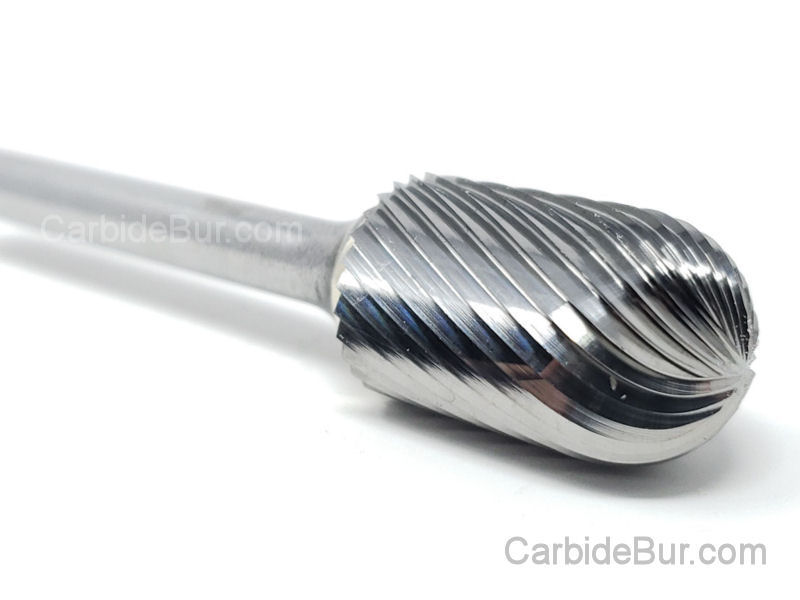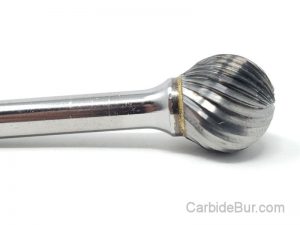From Dental Burs to Rotary Tools: Navigating the World of Industrial Burs and Tool Bits
The realm of industrial burs and tool bits is vast and intricate, catering to a diverse audience ranging from dental professionals to DIY enthusiasts. Within this domain, understanding the nuances between various types of burs, such as carbide burs and their counterparts, is crucial for making informed decisions. Whether you’re comparing burs based on pricing or evaluating the benefits of burs sets, knowing the specific applications of dental burs and other tools can significantly impact your work. This guide aims to demystify the world of Tungsten carbide tools, exploring their roles in metalworking, grinding, and machining. Join us as we delve into the intricacies of cutting tools, rotary tools, and the essential distinctions that define each type of industrial tool and tool bit.
Understanding Industrial Burs
Industrial burs play a pivotal role in various applications, from dentistry to metalworking. This section unpacks the different types of burs, their specific uses, and how they compare across industries.
Types of Burs Explored
Understanding the types of burs is essential for selecting the right tool for your needs. Burs can be categorized into several types, such as carbide burs, diamond burs, and others. Carbide burs are known for their durability and are widely used in both dental and industrial applications.
In addition to carbide burs, there are steel burs and diamond burs. Steel burs are often used for softer materials, while diamond burs provide precision in applications requiring fine detail. For a deeper dive into the differences between diamond and carbide burs, visit this resource.
Key differences:
|
Type |
Material |
Durability |
Applications |
|---|---|---|---|
|
Carbide |
Tungsten |
High |
Metal, dental work |
|
Diamond |
Crystalline |
Very High |
Precision cutting |
|
Steel |
Carbon |
Medium |
Soft material tasks |
Comparing Dental and Rotary Tools
Dental tools and rotary tools share similarities but differ significantly in their applications. Both utilize burs, but the context of use varies. Dental burs are designed for precise tasks such as cavity preparation and crown removal.
In contrast, rotary tools are versatile and used in broader applications like metalworking and woodworking. The choice of tool largely depends on the task at hand. For a visual guide on using rotary tools, check out this YouTube video.
Comparison Table:
|
Tool Type |
Primary Use |
Flexibility |
Common Users |
|---|---|---|---|
|
Dental |
Oral care |
Specialized |
Dentists |
|
Rotary |
Various materials |
Highly |
Hobbyists, Trades |
Navigating Burs Pricing
Pricing in burs varies widely based on material, brand, and application. A carbide bur might be more expensive than a steel bur due to its longevity and efficiency. Prices can also fluctuate based on the set size and included accessories.
To make informed decisions, consider the total cost of ownership, which includes initial purchase price, replacement frequency, and performance efficiency. For detailed pricing information on carbide burs, check out Carbide Burs.
Factors Influencing Price:
-
Material quality
-
Set versus individual purchase
-
Brand reputation
Choosing the Right Tool
Choosing the correct tool is vital for efficiency and effectiveness. This section will guide you through selecting the right burs, focusing on Tungsten carbide burs and carbide inserts.
Tungsten Carbide Burs
Tungsten carbide burs are renowned for their strength and durability. These burs are often preferred in industries requiring heavy-duty applications such as metalworking and machining. Tungsten carbide is a hard material that withstands high temperatures, making it ideal for demanding tasks.
Benefits of Tungsten Carbide:
-
Longevity: Outlasts many other materials.
-
Efficiency: Reduces time spent on tasks.
-
Versatility: Suitable for various materials.
For more on the properties of Tungsten carbide, visit this site.
The Role of Carbide Inserts
Carbide inserts play a crucial role in enhancing the cutting efficiency of tools. They are used in machining tools to provide a sharp, durable edge. These inserts are replaceable, which extends the life of the tool and reduces overall costs.
Advantages of Carbide Inserts:
-
Cost-effective: Only the insert needs replacing.
-
Precision: Offers a clean, precise cut.
-
Adaptability: Fits various tool types.
For a comprehensive explanation, consider reviewing resources on carbide burs.
Selecting the Perfect Burs Set
Choosing a burs set involves understanding your specific needs. A complete set can provide all the necessary tools for various tasks, offering both convenience and cost savings. When selecting a set, consider the range of burs included, quality, and price.
Considerations for Burs Sets:
-
Application needs: Select based on the type of work.
-
Quality of materials: Ensure durability and efficiency.
-
Budget: Compare costs against individual purchases.
For insights on what to look for in a burs set, explore Carbide Bur.
Practical Applications and Benefits
Industrial tools like burs have numerous applications and benefits. This section highlights insights into metalworking, grinding, and cutting tools.
Metalworking and Machining Insights
Metalworking and machining demand tools that are both robust and precise. Carbide burs are commonly used in these sectors due to their ability to cut through tough materials.
Key Insights:
-
Efficiency: Carbide burs enhance productivity in machining tasks.
-
Durability: High resistance to wear and tear.
Carbide burs provide an edge in industries where precision is key. For more on how they are used, see Carbide Burs.
Enhancing Efficiency in Grinding
Grinding tasks often require tools that can maintain sharpness and withstand pressure. Tungsten carbide tools are ideal for grinding due to their hardness and heat resistance. Using these tools can significantly improve efficiency.
Benefits of Tungsten Carbide in Grinding:
-
Reduced downtime: Less frequent tool changes.
-
Consistent performance: Maintains sharpness longer.
To learn more about the advantages of tungsten carbide in grinding, check out Carbide Bur.
Versatility of Cutting and Tool Bits
Cutting and tool bits must offer versatility to adapt to various tasks. Carbide tool bits provide this flexibility, making them suitable for different materials and industries.
Applications and Versatility:
-
Variety of cuts: From fine to coarse.
-
Material compatibility: Effective on metals, plastics, and more.
For additional information on the versatility of cutting and tool bits, visit Carbide Bur.
The Power of Carbide Tools for Precision and Durability
Transform Your Workshop: The Power of Carbide Tools for Precision and Durability You pour hours into your projects, yet something feels off. Your workshop tools might be holding you back. Enter carbide tools—the secret to [...]
The Importance of Carbide Bur Bits for Every Artisan
Mastering Your Craft: The Importance of Carbide Bur Bits for Every Artisan If you've ever struggled with a dull or inefficient tool, you know the frustration it brings to your workbench. Enter carbide bur bits—a [...]
Why Manufacturers Choose Durability and Performance
Carbide vs. Other Materials: Why Manufacturers Choose Durability and Performance When it comes to choosing the right material for your tools, not all options are created equal. Have you ever found yourself frustrated by frequent [...]
Selecting the Right Tools for Precision and Efficiency
Boost Your DIY Confidence: Selecting the Right Tools for Precision and Efficiency Ever felt like your DIY projects just aren't hitting the mark? You're not alone. Many enthusiasts struggle with precision because they haven't found [...]
How Carbide Bur Bits Enhance Your Craftsmanship
Precision and Performance: How Carbide Bur Bits Enhance Your Craftsmanship You've been there—hours spent crafting only to face uneven edges or rough finishes. Precision tools make all the difference, and carbide bur bits are the [...]
Why Carbide Bur Bits Are the Secret to Precision Cutting
Time to Upgrade: Why Carbide Bur Bits Are the Secret to Precision Cutting Tired of tools that just don’t cut it anymore? It's time to ditch those outdated bits and embrace carbide bur bits for [...]
The Benefits of Using Carbide Bits in Your Projects
From Hobby to Mastery: The Benefits of Using Carbide Bits in Your Projects You may think you've tried every tool out there, but there's one secret weapon you might have overlooked—carbide bur bits. Imagine transforming [...]
Turning Passion into Profits with Carbide Bits
Monetize Your Craft: Turning Passion into Profits with Carbide Bits You spend hours perfecting your craft, but your creations seem to collect more dust than dollars. Imagine turning those hobbies into a thriving business that [...]
Why DIY Enthusiasts Are Raving About Carbide Bur Bits
Why DIY Enthusiasts Are Raving About Carbide Bur Bits Think you have all the DIY tools you need? Think again. Carbide bur bits are quickly climbing the ranks as a home depot must-have, and for [...]
From Cheap Grinders to Quality Carbide Bur Bits
From Cheap Grinders to Quality Carbide Bur Bits: A Comparison Guide Think cheap grinders are a bargain? Think again. Many DIY enthusiasts and professionals fall into the trap of saving a few bucks on these [...]
How Die Grinder Tool Bits Inspire Metalworking and Woodworking Innovations
Craft Your Masterpiece: How Die Grinder Tool Bits Inspire Metalworking and Woodworking Innovations Imagine transforming a simple block of metal or wood into an intricate masterpiece. That's the magic of die grinder tool bits. For [...]
Precision Grinding Secrets Every Entrepreneur Craftsperson Should Know
Precision Grinding Secrets Every Entrepreneur Craftsperson Should Know You pour hours into your wood or metal projects, only to find the finish isn't quite right. Frustrating, isn't it? Precision grinding can be your game-changer, ensuring [...]



Leave A Comment
You must be logged in to post a comment.